Vampire movies star one of cinema's most frequent monsters, a creature whose bloodlust reflects humanity's desires for love and immortality. Each decade brings a new version, turning old folklore into a reflection of current worries about power, addiction, sexuality, and loneliness.
These undead figures, night hunters, and unwilling immortals have grown from silent-era symbols into complex antiheroes whose influence endures in popular culture. The seven vampire movies below demonstrate that the genre remains strong.
Spanning four decades, they blend artistic, violent, and humorous styles to update traditional images without losing the basic fear of a vampire bite. Each entry on this list of vampire movies showcases fresh ideas that will leave viewers wanting more.
Disclaimer: The following movies are ranked in no particular order. This article solely contains the writer’s opinion.
7 must-watch vampire movies that you should try
1) Interview with the Vampire (1994)
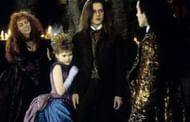
Adapted from Anne Rice’s 1976 novel, the film chronicles how eighteenth-century planter Louis de Pointe du Lac (Brad Pitt) is transformed by the charismatic Lestat (Tom Cruise) into a creature of the night.
Their uneasy partnership spans two centuries, encompassing plantation life, Parisian coven intrigue, and the child-vampire Claudia (Kirsten Dunst), who disrupts their dynamic. Trapped in mourning for lost humanity, Louis recounts his saga to a reporter (Christian Slater) in modern-day San Francisco.
With lush visuals and a somber score, Director Neil Jordan elevates the film beyond typical vampire movies, portraying vampirism as a thoughtful burden. Tom Cruise’s charismatic Lestat and Brad Pitt’s sorrowful Louis anchor the gothic drama of Interview with the Vampire, lending the monsters a tragic appeal.
2) Let the Right One In (2008)
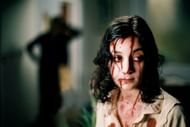
Set in a sterile Stockholm suburb in 1982, this Swedish film focuses on 12-year-old outsider Oskar, who is preyed upon by school bullies. He forms a tentative friendship with Eli, a perpetual child who cannot enter his home until explicitly invited.
When bodies drained of blood begin turning up, Oskar realizes Eli’s caretaker is killing to provide her with blood, forcing Eli to choose between secrecy and her new friendship. Unlike many vampire movies, director Tomas Alfredson mirrors childhood isolation with drained colors and quiet snow.
Eli’s condition represents what adults call trauma and kids experience as difference; her constant hunger reflects puberty’s sudden changes. By the time Eli saves Oskar from drowning bullies, viewers have witnessed a relationship that is both caring and dangerous, demonstrating that empathy does not require moral perfection.
Also read: 7 best survival movies to watch if you like The Last of Us
3) 30 Days of Night (2007)
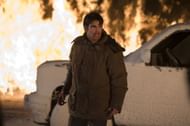
In remote Barrow, Alaska, darkness covers the community for an entire month, an Arctic feature used by a roving pack of aggressive vampires led by Marlow (Danny Huston). Sheriff Eben Oleson (Josh Hartnett) and estranged wife Stella (Melissa George) battle blizzards as the town becomes a food source.
Their survival depends on tough choices, climaxing when Eben injects vampire blood into his veins to battle Marlow and protect the survivors before the dawn. It strips away the romance found in many vampire movies, turning vampirism into a natural disaster: no castles, no capes, just pure hunting efficiency.
Predators communicate in an unsubtitled harsh language, showing their distance from human rules, while wide overhead shots of blood-covered snow show deep despair. In 30 Days of Night, an industrial score heightens dread, while realistic makeup makes each attack feel all the more real.
4) From Dusk Till Dawn (1996)

Crime brothers Seth and Richie Gecko (George Clooney, Quentin Tarantino) hijack a faith-lapsed preacher (Harvey Keitel) and his children in a race to the Mexico border. They reach the Titty Twister, a desert strip club, but midnight transforms the venue into a bloodbath when the performers reveal their true vampiric forms.
Outlaws and hostages must ally with biker patrons to forge a vampire-killing arsenal out of wooden chair stakes and holy water. Filmmaker Robert Rodriguez and screenwriter Quentin Tarantino shift from a crime thriller at the midpoint, transforming a hostage drama into a monster action film.
The contrast heightens horror by subverting many expectations of vampire movies; there are no romantic castles or hinted graves, just a quick burst of skull-themed style and sharp one-liners. In From Dusk Till Dawn, the mix of gore and kinetic camerawork cemented the film’s cult status.
Also read: 7 time-travel movies that every sci-fi fan should watch
5) What We Do in the Shadows (2014)
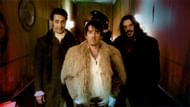
Set in contemporary Wellington, this mockumentary traces the lives of three vampire flatmates, Viago, Vladislav, and Deacon, who bicker over dishes and rent while sharing a house with the reclusive 8,000-year-old Petyr. Their world shifts when a new vampire introduces them to social media and nightlife.
As the clan prepares for the annual Unholy Masquerade, friendship with human IT worker Stu centers their lives, proving decorum can hold even for creatures of the night. Writers-directors Taika Waititi and Jemaine Clement use everyday life for humor, creating one of the funniest vampire movies.
They find comedy in living forever, yet having to clean up remains. In What We Do in the Shadows, their improvisational documentary-style approach makes supernatural traits ordinary: flight becomes basic travel, and hypnosis settles bar bills.
6) A Girl Walks Home Alone at Night (2014)

Dubbed “the first Iranian vampire western,” Ana Lily Amirpour’s black-and-white film is set in the wasteland of Bad City. The enigmatic Girl (Sheila Vand), clad in a chador, skates through empty streets to prey on men who exhibit predatory behavior.
She crosses paths with Arash, a debt-ridden gardener in a Dracula costume; an unspoken romance develops that blurs the lines between vigilante justice and personal need. Director Amirpour’s debut combines Western and feminist ideas, utilizing the chador as both a cover and a cape, transforming social limits into a powerful form of secrecy.
Sparse dialogue highlights strong-contrast visuals, recalling the graphic-novel simplicity of films like Sin City, a unique aesthetic for vampire movies. The film redefines strength without preaching; the Girl’s silence challenges male-dominated speech, showing control through not explaining.
7) The Lost Boys (1987)
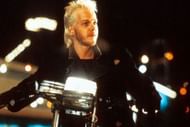
Divorced mom Lucy relocates her sons Michael and Sam to sun-drenched Santa Carla, California, whose boardwalk conceals a coven of teenage vampires led by the iconic David (Kiefer Sutherland). After Michael drinks blood from an ornate bottle, he begins a slow transformation.
In The Lost Boys, Sam allies with the comic-shop-owning Frog Brothers to identify the head vampire, culminating in a battle where survival depends on applying comic-book lore about vampire weaknesses.
Director Joel Schumacher’s teen horror mix is one of the most stylish vampire movies of the 1980s. It blends vampire traditions with mall culture. The film combines punk fashion, a rock soundtrack, and video-style editing to keep the myth relevant for a new generation.
Also read: 7 best slow-burn movies to watch at least once
The seven vampire movies above show that vampire cinema avoids a single fixed form. Instead, it changes to reflect different worries, whether moral guilt in old homes, child loneliness in cold places, or bright freedom in coastal areas.
Each entry of vampire movies updates horror with new ideas: detailed interviews, mockumentary closeness, feminist clothing symbols, or violent genre shifts. Generations may move from simple props to serious social views, yet interest stays strong as every viewer senses a bite away lies a connection to the eternal.
